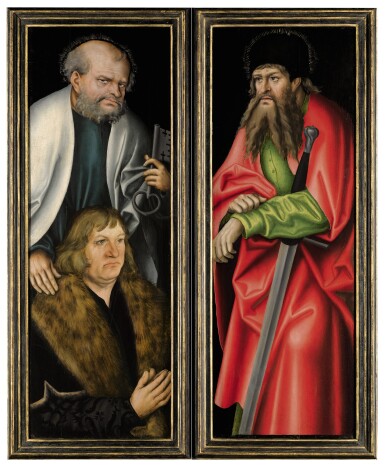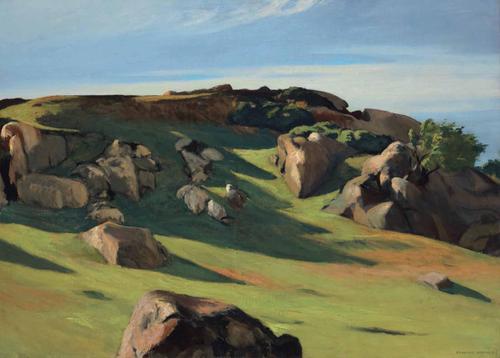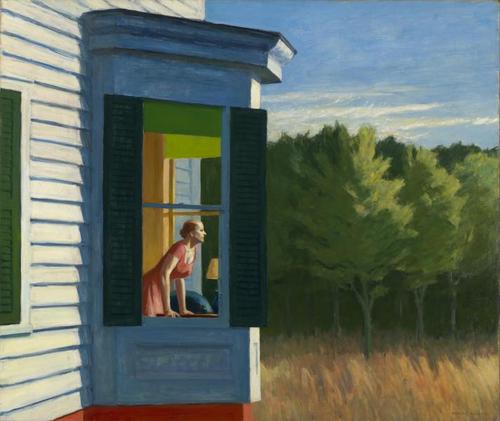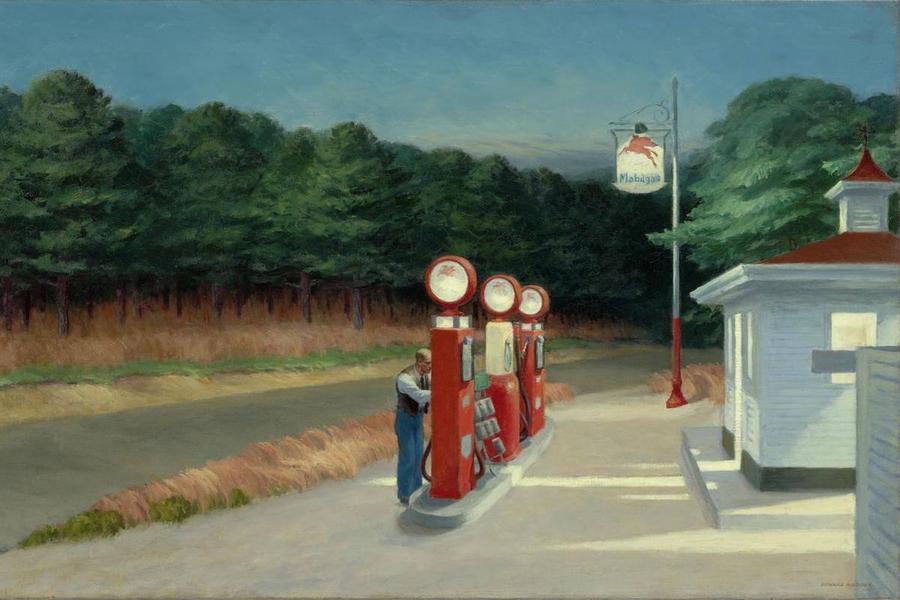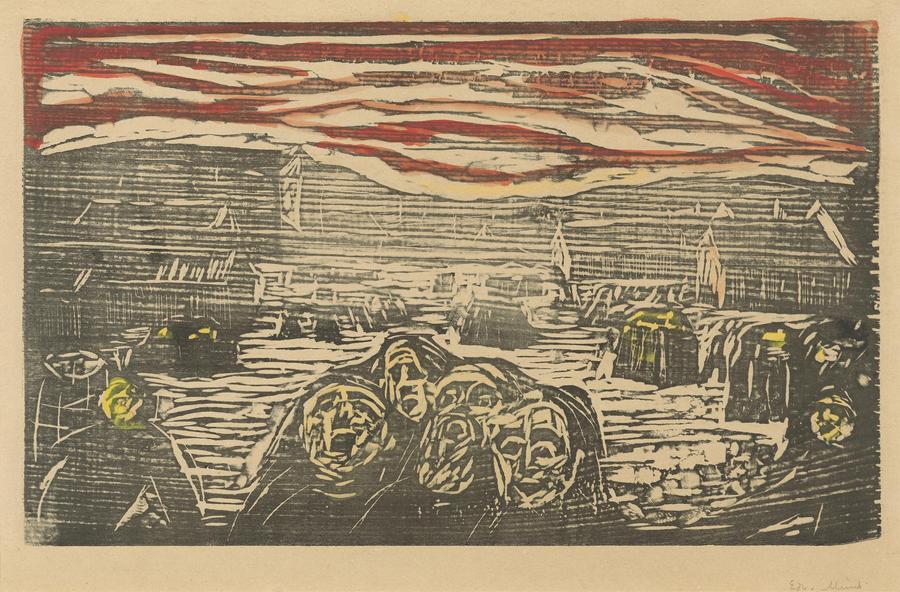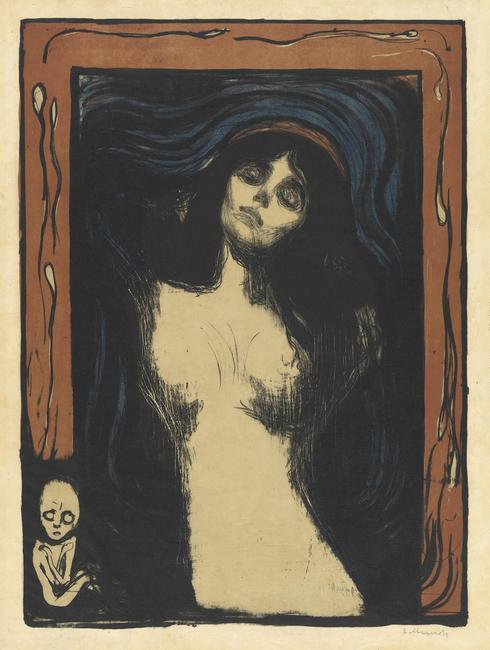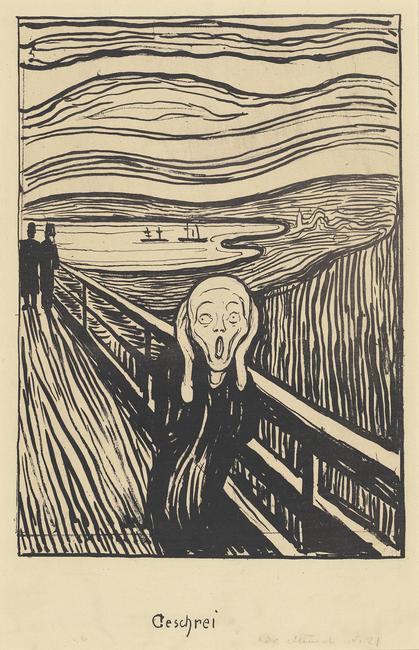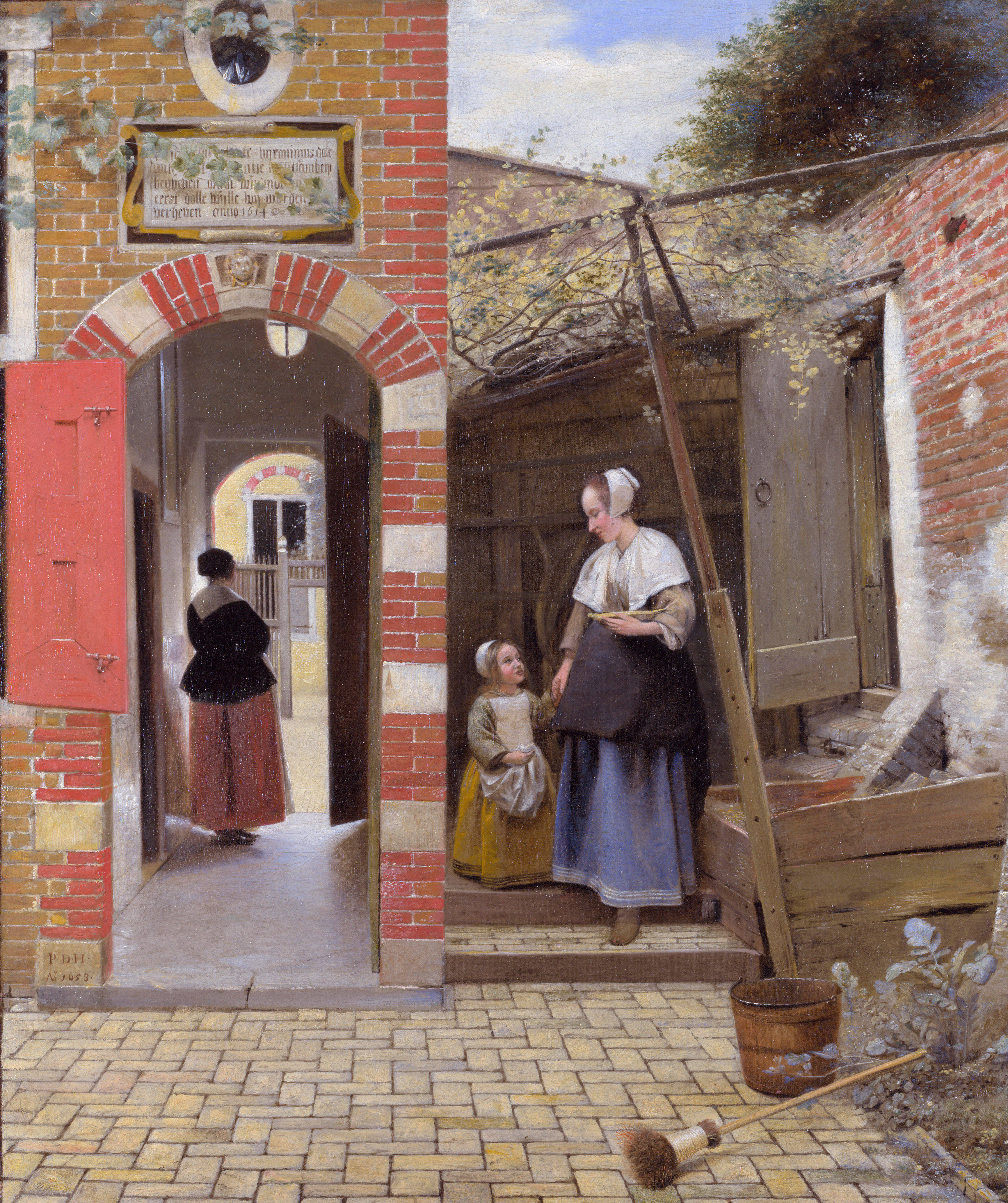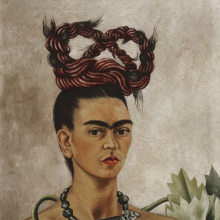
MASTER OF THE BRUGES LEGEND OF SAINT URSULA, CIRCA 1480-1485 | MADONNA AND CHILD, HALF LENGTH, WITH AN EXTENSIVE LANDSCAPE SEEN THROUGH TWO WINDOWS BEYOND
LUCAS CRANACH THE ELDER | THE LEFT AND RIGHT INTERNAL WINGS OF THE FEILITZSCH ALTARPIECE: SAINT PETER WITH A DONOR, PROBABLY JOBST VON FEILITZSCH; SAINT PAUL
Giovanni Battista Tiepolo, Madonna of The Rosary with Angels. Signed and dated on the pedestal: JOA. BATTA: TIEPOLVZ.F. / ...1735, oil on canvas, 96¾ by 61½ in.; 246 by 156 cm. Estimate in excess of $15 million. Courtesy Sotheby's.
Sotheby’s announced that one of the greatest works by Giovanni Battista Tiepolo remaining in private hands will be offered as the headline work in their Master Paintings Evening Sale in New York on 29 January 2020. Painted in 1735, The Madonna of the Rosary with Angels is an important early work by the great Venetian artist, dating from a period that is considered one of the artist’s most significant and one that brought him recognition as among the greatest painters of 18th-century Europe. Other Tiepolo altarpieces from this time hang in prominent churches and museums throughout the world, establishing the forthcoming auction as a rarified event. Estimated to achieve in excess of $15 million, the monumental painting is one of the rarest and most significant works by Tiepolo ever to come to market.
Tiepolo is widely regarded as Venice’s foremost artist in the 18th-century, whose decorative and imaginative style not only had a profound and lasting impact on Italian art, but was also a vital precursor to Romanticism and the Belle Époque movements. Major works of such astounding quality by Tiepolo are rare on the international market, for much of his work was carried out in frescoes and altarpieces that remain in situ. The present work last appeared at auction at Sotheby’s in 1989, where it made a record £1.3 million / $2.1 million.
Christopher Apostle, Head of Sotheby’s Old Master Paintings Department in New York, said: “Tiepolo is one of those seminal figures— so imaginative and innovative – to have completely transformed the way we view art. An artist rooted in the tradition of his Venetian predecessors Titian and Veronese, he was at the same time incredibly modern, able to tailor his works to suit the tastes of the time. Proof of his genius is in the painterly ability to express beauty, from highlighting the sensual apparel and fabrics of silk and satin, transforming painted figures into three dimensions, to his bold application of color and treatment of light.”
Signed and dated 1735, the altarpiece is a work of his early maturity, a period in which Tiepolo fused the dramatic composition, grand scale and bold coloring of his Italian Renaissance paintings with the fantastical, theatrical elements of the Grand Manner. In the present altarpiece, the Virgin holds a rosary in her outstretched left hand as if offering the beads to a devotee, and she wears the less typical red cloak that associated her with royalty, as well as the roses that each prayer in the rosary symbolizes. The gold brocade hanging behind the Madonna recalls early Venetian masters like Giovanni Bellini, and the attendant angel kneeling in the left foreground echoes the placement of similar figures in the works of Mannerist painters Correggio and Parmigianino.
The overall emotion and grandiosity of the Venetian masters Titian, Tintoretto, and Veronese is evident in Tiepolo's works from the 1730s, and paying homage to these artists was likely encouraged by his patrons. Further, the work bears stylistic similarities with the artist’s Adoration of the Christ Child, which is presently displayed in St. Mark’s, Venice. Both paintings are boldly composed and colored and demonstrate Tiepolo’s theatrical flair.
Despite the artist’s prominent signature and date, as well as the monumental size of the canvas, the original location of the altar where the painting resided has yet to be determined. It was most likely commissioned for a Dominican church, which was the order that is most closely associated with promulgating the Rosary throughout Europe. Tiepolo would have been aware of the popular devotional practice, as it enjoyed renewed emphasis during the papacy of the Dominican Pope Benedict XIII (1724 –30).
Prior to 1735, Tiepolo had received no major commissions for church altarpieces in Venice, the demand for such work there in the 1730s having slackened considerably. Instead, it may have been produced for some ecclesiastical site in or near Udine, where Tiepolo was employed at the time.
By the early nineteenth century, Tiepolo’s altarpiece had made its way to England, and the first documented owner of the painting was John Webb, Esq., who amassed an impressive collection of Old Masters, including works by Raphael, Giulio Romano, Caravaggio, David, Greuze, Rembrandt, and Velazquez. The next owner of the illustrious altarpiece was Hugh Andrew Johnstone Munro, called Munro of Novar, a close friend and patron of J.M.W. Turner who also owned Tiepolo's Martyrdom of St. Agatha (circa 1755), now in Berlin's Gemäldegalerie.
Both works by Tiepolo were sold by Munro's heirs in 1878 and purchased by Galerie Sedelmeyer, and both later entered the collection of Sir Joseph Robinson, South African gold and diamond magnate and politician. Robinson purchased Dudley House in London in 1894 and began collecting to fill his 80-foot picture gallery. At the age of eighty-five, in 1923, he took the decision to sell his collection at Christie’s. However, upon arriving at the auction rooms the night before, wheelchair-bound, in order to say a final goodbye to his beloved pictures, he fell in love with them all over again and proceeded to apply prohibitively high reserves on the lots so that, in the end, just twelve of the one hundred and sixteen lots found buyers, and the remainder, including the present Tiepolo, returned to store. The Tiepolo and much of the collection passed to Robinson's daughter, Ida Louise, who married Conte Natale Labia, Italian ambassador to South Africa (d. 1936), and remained in the family until their two sons sold some of the paintings, including this one, at Sotheby’s in 1989.
Sotheby’s has also announced that Sir Peter Paul Rubens’ The Virgin and Christ Child, With Saints Elizabeth and John the Baptist will be offered as a highlight of Sotheby’s Masters Week in January 2020, marking the first appearance of the work at auction since 1946, where it is estimated to achieve $6/8 million. The annual week of auctions at Sotheby’s New York features masterworks spanning six centuries of the pre-Modern period, including impressive Old Master Paintings, Drawings, Sculpture and 19th Century European Art.
Sir Peter Paul Rubens (Siegen 1577 - 1640 Antwerp), The Virgin And Christ Child, with St. Elizabeth and St. John the Baptist. Oil on panel, 47⅞ by 37⅝ in.; 121.6 by 95.5 cm. Estimate $6/8 million. Courtesy Sotheby's.
Sir Peter Paul Rubens (1577 – 1640) is one of the most well-known and revered artists of the Flemish Baroque style that flourished in the early 17th century. Though he resided in Antwerp, Rubens traveled throughout Europe and his influence was for felt for generations. The present painting is a large-scale work on panel depicting the popular subject of the apocryphal meeting of the Christ Child and young John the Baptist, which is believed to derive from the Meditationes Vitae Christi, attributed to St. Bonaventure. The scene was particularly common in Italian paintings of the time, and Rubens would have drawn inspiration for his work from Leonardo’s well-known depiction of the subject as well as a version by Guilio Romano, which was acquired as a Raphael in 1604 by Rubens’ Italian patron, the Duke of Mantua.
While the present painting was studied by renowned Rubens’ scholar Ludwig Burchard just after the end of World War II, it was not widely known to other by scholars and researchers. Having remained in private collections since it was last sold at auction in 1946 at Sotheby’s London, and only publicly exhibited once in 1951 in New York, the painting was unseen by the scholarly community until it was brought to the attention of Sotheby’s Chairman George Wachter and Senior Vice President for Old Masters, Otto Naumann.
Working with Rubens scholars Fiona Healy and Arnout Balis, Naumann concluded that the present painting is indeed the prime version of the composition, and that other previously known examples are either copies or can be attributed to his workshop. Notable among these is a well-known version from the Thyssen-Bornemisza Collection in Madrid, which is presently on long-term loan to the Museum of Catalan Art in Barcelona, It was most recently attributed in a Thyssen Collection catalog as an “autograph replica c. 1618…possibly executed with studio assistance.”
Naumann’s research of the present painting included independent scientific examination including dendrochronological analysis (tree-ring dating) of the painting’s wooden panels by Professor Peter Klein, which concluded the painting could have a plausible creation as early as 1610. With the aid of scientific dating, Naumann’s research positions the present painting as the earlier and original edition from which all other known examples were based, and it was likely executed three to six years after Rubens returned to Antwerp from Rome in 1608.
The Thyssen version, which has been dated to circa 1618, also bears significant stylistic differences to the present painting, which can be attributed plausibly to the introduction of Anthony van Dyck into Rubens’ studio around 1614. Van Dyck’s elegant manner of painting and his characteristic quality of grace are apparent in the Thyssen version, which is notably softer in the faces of the Virgin and St. Elizabeth, and in the sculptural folds of Mary’s red robe. These changes, among others, demonstrate that the Thyssen version is an artful reinterpretation of the present original.
The timely rediscovery of this masterpiece and the dedicated research spearheaded by Otto Naumann and his colleagues have resulted in its planned inclusion in a forthcoming volume by Fiona Healy of the Corpus Rubenianum Ludwig Burchard dedicated to The Holy Trinity: The Life of Virgin, Madonnas, The Holy Family.
 Recently rediscovered drawing for his famed series The Triumphs of Caesar. Estimated to achieve in excess of $12 Million. Courtesy Sotheby's. | ||
Sotheby’s will offer one of the most art-historically important drawings ever to appear at auction: Andrea Mantegna’s only known preparatory drawing for one of the canvases in the Triumphs of Caesar, the Italian Renaissance artist’s most influential and revered work. Recently rediscovered, the masterwork will headline Sotheby’s Old Master Drawings auction in New York on the 29th of January 2020, when it is estimated to fetch in excess of $12 million. Andrea Mantegna (c. 1431-1506) was one of the most innovative, influential and celebrated artists of the Italian Renaissance. His importance was very recently underscored by the major exhibition, Mantegna and Bellini, dedicated to his work and that of his brother-in-law Giovanni Bellini, held at the National Gallery, London, and the Gemäldegalerie, Berlin. Approximately 20 drawings by Mantegna are known, all except two (including the present work) are in the collections of major museums, such as the British Museum in London. The sale of this drawing is of enormous significance: only two other drawings by Mantegna have appeared at auction in the last half century. Dated to the late 1480s, the drawing is the only known preparatory study for Mantegna’s famed and celebrated masterpiece, the Triumphs of Caesar – a series of nine monumental paintings depicting the triumphal procession of Julius Caesar and his army through ancient Rome. The paintings are part of the British Royal Collection at Hampton Court Palace, where they have resided since they were acquired by King Charles I in 1629. The King bought the paintings directly from the Gonzaga family, Dukes of Mantua, who were Mantegna’s most important patrons. The present pen and ink drawing is a study for ‘The Standard Bearers and the Siege Equipment,’ which is the second canvas in the Triumphs series. The drawing theatrically recreates a section of the processional that includes gigantic statues on carts, a model of the tower of Alexandria, and oversized siege weapons. Though sold as an autograph work by Mantegna in 1885, the drawing subsequently disappeared into private collections, and was totally unknown to scholars until shortly before the Mantegna and Bellini exhibition in London and Berlin. Its inclusion in that exhibition caused much excitement, but only since the exhibition have other extremely significant aspects of the drawing been identified, following further careful research by Cristiana Romalli, Senior Director and Italian specialist in Sotheby’s Old Master Drawings Department. On the basis of new technical analysis using infrared photography, performed by Sotheby’s Department of Scientific Research, Romalli was able to establish that the main figure on the left side of the composition was altered very significantly during the process of the drawing’s creation. Underneath the figure of Aesculapius, the Greek god of medicine, which appears in the finished drawing and the final painted version, there is actually another entirely different figure, identified by Romalli as Helios, the Roman god of the Sun, which the artist chose to obliterate and replace as he developed his composition. This change conclusively proves that Mantegna himself was the author of the drawing, and this remarkable and unexpected discovery sheds exciting light on Mantegna’s restless working method, in which he continued to edit, refine and perfect his compositions, even in the final stages. Moreover, it is unquestionable proof that this is the only known surviving preparatory study for the Triumphs. Speaking of the drawing, Cristiana Romalli said: “The discovery of a previously unseen underdrawing, more than five hundred years after it was made, is a moment of considerable importance for the study of this complex, intriguing and highly influential master of the early Italian Renaissance. By examination under special filtered infrared light, we were able to detect the hidden figure of Helios, revealing a major change in the composition that proves Mantegna’s authorship. This change in fact defined his whole approach to the finished painting that we see today. The exceptional and rare opportunity to bring to light this news, obscured for centuries, is what defines the excitement and thrill of the drawings market. It is a great privilege to be handling the sale of a drawing of such extraordinary importance and rarity.” | ||







